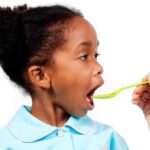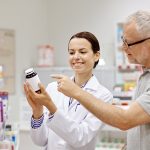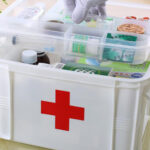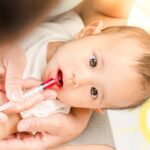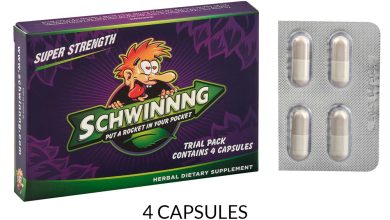How to Safely and Correctly Measure Liquid Medicines
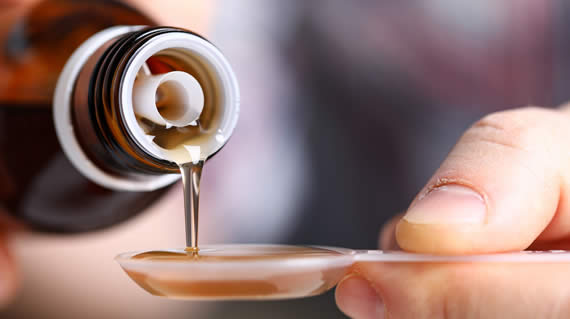
Available data indicates that approximately 7 in 10 people fail to measure a dose of liquid medicine correctly, particularly common when using a dosing cup or dosing spoon rather than an oral syringe or dropper. Mix-ups are frequent between milligrams (mg), the dose of the medicine and milliliters (mL), the volume of medicine to measure out.
The National Coordinating Council for Medication Error Reporting and Prevention defines a medication error as: “… any preventable event that may cause or lead to inappropriate medication use or patient harm while the medication is in the control of the healthcare professional, patient, or consumer.
In 2017, The World Health Organisation (WHO) launched a third global patient safety challenge “Medication Without Harm”, aimed at improving medication safety, on the basis that medication errors are a leading cause of injury and avoidable harm in health care systems, globally generating costs that has been estimated at 42 billion USD annually.
What is the safest method to measure out a liquid medication?
When measuring the liquid medicine, always be sure to look at it at eye level. With dosing cups, measure on a flat surface and not while holding in one hand. Never measure liquid medicine in a dim room or when you are distracted. After measuring liquid medicine, immediately replace the cap.
How to Handle OTC liquids:
- Always use the dosing device that comes with the medicine, such as a syringe or a dosing cup. If a dosing device does not come with the product, ask a pharmacist to recommend one.
- Never use household measuring devices to give liquid medicines. They are inaccurate and may deliver more or less than prescribed. Today’s OTC liquid medicines almost always have their own measuring devices.
- When administering OTC liquids to a child, be sure to know the child’s current weight. To get the most accurate dose for a child, it is best if it is dosed according to weight, not age. Tables are often present on the product label to help guide proper dosing by weight.
- It’s best to store both the medicine and dosing tool together. This way you will always have the correct measuring device on hand when you need it.
- When measuring the liquid medicine, always be sure to look at it at eye level. With dosing cups, measure on a flat surface and not while holding in one hand.
- Never measure liquid medicine in a dim room or when you are distracted.
- After measuring liquid medicine, immediately replace the cap. If small children either live in your home, or will be visiting, be sure child-resistant caps are on.
- If using a syringe with a special adapter that allows medication to be drawn directly from the bottle , be aware it may not be childproof. When using these products, always be sure to remove the adapter and replace a childproof cap after measuring the liquid. NEVER store the syringe on the adapter.
- Always store adult and child preparations of liquid medicine in separate areas. This will decrease the chance of mixing up the containers by accident.
How to Handle Prescription Liquid Medicines:
- When getting a prescription from a healthcare provider, listen carefully to the dosing instructions. Look at the prescription and be alert to the amount of liquid you are supposed to take. If your doctor is sending an electronic prescription to the pharmacy, request a hard copy for your records. This is for your reference when you pick up your prescription at the pharmacy.
- When obtaining your prescription at the pharmacy, look closely at the dosing instructions. Be sure the volume of medicine called for on the prescription is exactly what appears on the label. Read it carefully. On occasion, an error can occur in which the pharmacist or pharmacy technician transcribes the incorrect volume or dosage instructions. For example, instead of, “Take 5 mL,” the label may state, “Take 5 teaspoonfuls”.
- If your liquid medicine does not come with its own dosing device, ask your pharmacist for help in choosing the best one to meet your need.
- Some liquids, especially prescription liquids, will require refrigeration. Be sure to read the label carefully to find out how your medicine should be stored. If your medicine must be stored in the refrigerator, always be sure to store it on a high shelf towards the back so that a child can’t reach it.
Other Liquid Medication Safety Tips:
- After administering the medicine, always be sure to wash the dosing device. If you fail to do so, bacteria can grow and cause contamination with any future use.
- If you wash a dosing device immediately before administration, be sure to dry it well. Leaving liquid residue on the device can interfere with dosing accuracy.
- If you overfill a cup or dosing syringe when measuring, discard the excess medicine down the sink. Don’t try to pour any excess or unused medicine back into the container. Doing so will contaminate the medicine that is left in the container.
- To ensure accurate dosing, don’t combine more than one liquid medicine in a dosing device at the same time. The medicines may not be compatible.
- Do not combine any medicine with foods or drinks unless product labeling specifically says it is OK.

